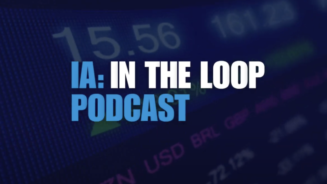An important shift is under way in international financial advice.
It has arguably been a long time coming but offshore intermediaries are increasingly coming round to the view that picking funds and constructing and managing investment portfolios is not the job of a financial planner.
These changes are being shaped by various push and pull factors – from regulators, PI insurers and clients themselves on one hand, to recognition among advisers on the other – that outsourcing certain responsibilities or making them more systems-driven can make businesses stronger.
Platform technology has a role to play in this dynamic, by facilitating greater incorporation of systems and processes into advice and allowing external services to be more easily plugged into advisers’ businesses.
"We believe the preferred choice for most advisers will be using risk-rated multi-asset funds as core homes for the bulk of clients’ investable wealth"
Setting standards
In the wider context of the offshore world, the cumulative attrition of high-profile fund ‘blow-ups’, resulting in losses for clients, reputational damage for advisers and sometimes legal and/or financial consequences, must also be considered.
During the past few years, such incidences have increased, contributing to what may now be a tipping point as advisers perceive the risks in picking investments to be too great.
Platforms are also important in this change, as more rigorous standards of due diligence are making it harder for illiquid or dubious funds to find their way into mainstream distribution channels.
Meanwhile, DFM-type services and investment solutions are becoming more widespread and accessible to international advisers through platforms, from traditional portfolio bonds to the rising number of hi-tech solutions being used.
This is a welcome development.
While many advisers are highly qualified and capable financial planners, they are not typically investment managers. Selecting investments, determining asset allocations and managing clients’ investment portfolios on an ongoing basis in line with risk profiles, capacity for loss and investment goals are highly skilled and resource-intensive disciplines.
Across the world it is increasingly required that those undertaking such activities pass appropriate exams and that their firms are authorised accordingly.
There are clear benefits for advisers in this trend as it allows for neater separation and segmentation of their responsibilities.
Regulators and PI insurers look favourably on this; so, too, do clients.
Clarity as to how their financial affairs are looked after provides investors with reassurance their investments are being professionally managed in line with their requirements, ultimately making a successful outcome more likely.
In turn, this gives clients greater confidence in their adviser, who can focus on financial planning and the soft skills essential to any successful advisory relationship.
So how is the market responding to meet this shift in demand for outsourced investment services and solutions?
Choosing the right approach
There are two main options available: DFMs and risk-rated multi-asset funds.
A third route for advisory businesses is bringing investment and portfolio construction expertise in house.
Each is valid in its own way and suitability will vary from firm to firm and client to client.
DFM services can be split into two options: truly bespoke and model portfolio.
One is more tailored than the other but both are attractive in terms of personalised service and risk-profiling.
They are also likely to be more expensive than the unitised fund approach, with higher costs potentially compounded by VAT and CGT issues in relation to service and trading.
DFMs also have higher entry thresholds, partly to offset the fixed costs.
Investing in internal investment resources is also costly, not least in terms of ongoing salary costs, and it may also be difficult to recruit suitably qualified individuals.
This route could also invite greater regulatory scrutiny and hurdles, and retain or import risks into a business when a better outcome would be to export it to a third party.
We believe the preferred choice for most advisers will be using risk-rated multi-asset funds as core homes for the bulk of clients’ investable wealth.
These should provide the all-important segregation of responsibilities for the adviser, while clients benefit from professionally managed portfolios tailored to their asset allocation and risk/reward profiles.
Such portfolios tend to be managed by large and well-resourced asset managers that are likely to have the edge on DFMs in key areas such as investment research.
All of this can be delivered via cost-effective, transparent, liquid, regulated and scalable fund structures that are readily accessed through the many different platforms that proliferate in international markets today.




